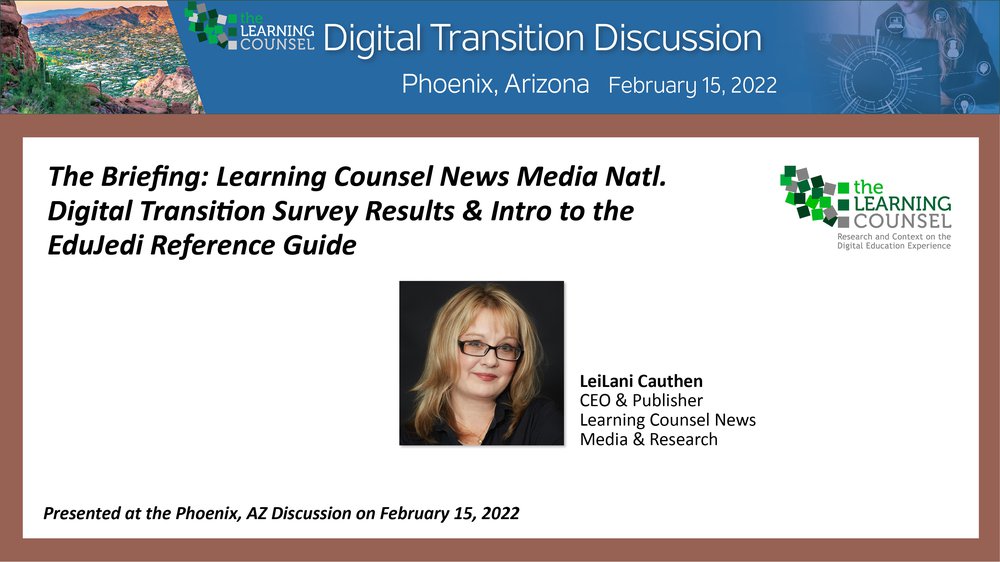At 8:30 sharp, as the enthusiastic crowd was gathering their coffee and heading for their seats, the Phoenix Digital Transition Discussion rolled into high gear. LeiLani Cauthen, CEO and Publisher of the Learning Counsel began her Digital Transition Briefing, based on the results of the Learning Counsel’s National Digital Transition Survey, the most comprehensive national survey of its kind. This year, more than 21,000 educators participated from May until November.
According to Cauthen, The K12 market has fractured into more alternatives with far less traditional model schooling. Both administrators and teachers are interested in a delivery model shift and lean toward Hybrid Hyflex and Blended/Flipped models.
Purchase intention through 2022 for digital curriculum remains high at over 63 percent of respondents. Hardware purchasing was up a bit and is expected to remain stably much higher than it was pre-pandemic.
Workflow and elements of time and space logistics remain mostly manual – EdTech is moving into this space with Hybrid Logistics and a different kind of transformation.
Teacher-centric lesson planning is a massive hidden time cost which lowers attention on students and is the real inhibitor of predictive analytics that would create full personalization. In fact, in 39 percent of cases, teachers do all lesson planning and choosing of digital resources. And in 29 percent of cases, districts issue pacing guides and digital resource playlists with some recommended steps for lessons, but teachers do remaining lesson build-out.
In the world of space and time, it is evident that little of either exists for teacher-student direct instruction.
- 26 percent of teacher’s custom build digital lessons on their own knowledge or textbooks for lecture and assignment-style delivery
- 13 percent use the open internet, social media, and teacher subscription sites to gather individual files and images to put into lessons
- 36 percent use some mix of approved materials and build-their-own pieces
Both teachers and administrators agreed that new types and new ways of offering PD are needed. In the survey, respondents indicated needing help with the following:
- 82.5 percent of respondents cited newly having to teach students online via video conferencing and other tools.
- 74 percent of respondents cited new apps and subscription sites of digital resources.
- 72.5 percent of respondents cited emotional impacts with families, individual students, other staff and possibly self.
- 65 percent of respondents cited changed schedules with different time slots and/or weekly alternating structures or otherwise different use of time.
- 62.5 percent of respondents cited different use of spaces.
Cauthen also reviewed the past year’s market spend. In 2021, $39.5 Billion was spent on Hardware, Major Systems, Digital Curriculum and Paper Resources, and Networks.
$14.9 Billion was spent on school educational digital curriculum alone, which paled in comparison to the consumer digital curriculum spend, which was $28.5 Billion.











